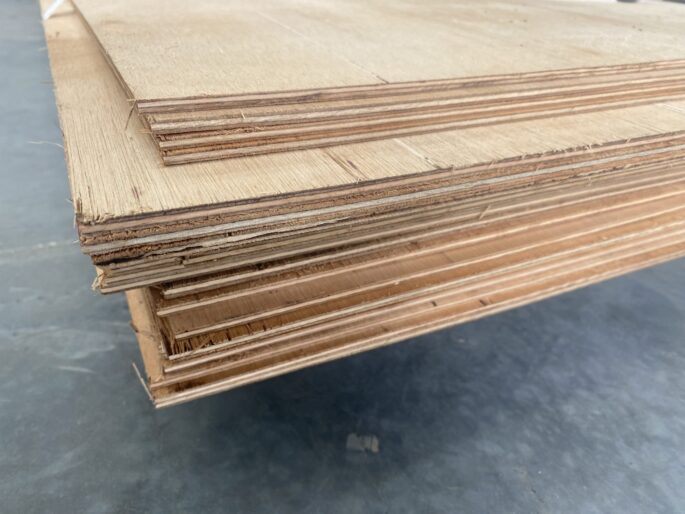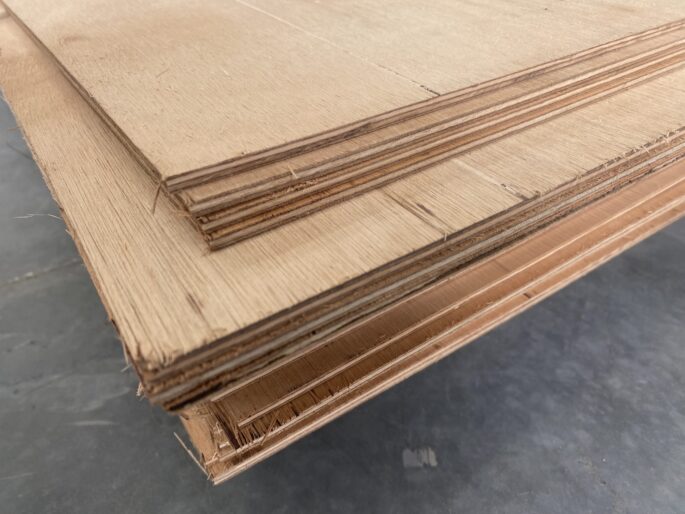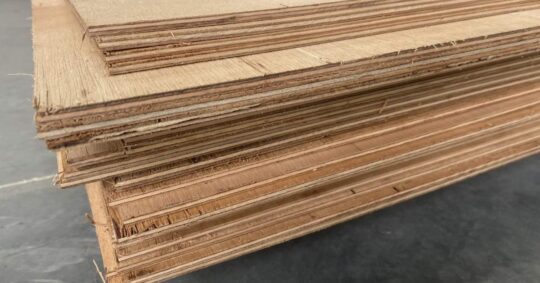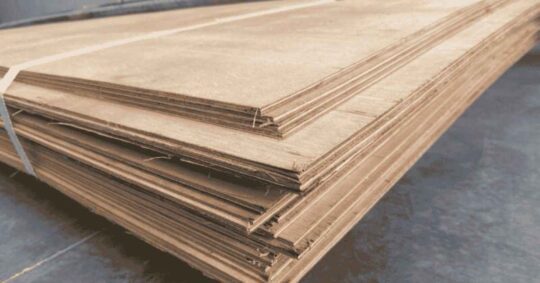- Your cart is empty
- Continue Shopping
Plywood in Modern Building: Five Key Advantages
Are you spending more on building materials than you need to?
Construction costs are rising, and if you’re not careful, your choice of materials could be quietly draining your budget. But there is one option that’s proving itself time and time again: plywood.
Gone are the days when plywood was considered a cheap substitute. Today, it’s a reliable, cost-effective, and widely used material in Australian construction and for good reason.
Here are five clear benefits of using plywood in your next build.
1. Impressive Strength Without Excess Weight
Plywood is built by layering thin sheets of timber veneer with alternating grain directions. This cross-laminated structure gives it excellent strength and resistance to splitting.
It performs well under pressure, handles weight evenly, and holds up across a range of applications. You’ll get the stability you expect from solid timber, but without the bulk or added cost.
In fact, for structural work like wall bracing, plywood sheets, particularly F22 Bracing Ply, are a common choice on Australian sites.


2. Better Value Over Time
Some building materials appear affordable at first, but can lead to extra costs later on, thanks to warping, cracking, or frequent replacements.
Plywood tends to stay consistent. It resists movement, maintains its shape, and doesn’t need the same level of ongoing maintenance. That means less waste, fewer delays, and more control over your build costs.
When you choose structural-grade plywood, you’re choosing a product that performs and lasts.
3. Efficient and Easy to Work With
Labour time matters. And anyone who’s worked on site knows that every hour saved makes a difference.
Plywood is relatively lightweight and easy to cut, move, and install. It speeds up work, reduces physical strain, and helps crews move more efficiently across the job.
That’s why builders and tradies keep turning to it, it’s practical, flexible, and dependable.
4. A Clean, Natural Finish (When You Want It)
Not all plywood needs to be hidden behind walls or floors.
When chosen with care, plywood can be used as a clean, natural finish for feature walls, ceilings, or cabinetry. It offers a modern timber aesthetic without needing extra cladding or treatment.
This makes it a smart option for anyone wanting something that’s both functional and visually appealing.
5. Built to Withstand Tough Conditions
Plywood can handle the types of conditions Australian homes are often exposed to, including humidity, heat, and structural stress.
Products like F22 Bracing Ply, supplied by Timber Central, are built to Australian standards and perform well in bracing and structural applications. These are not short-term solutions; they’re made for real-world conditions.
That peace of mind is worth holding onto.


So Why Isn’t Everyone Using It?
Some builders still have the idea that plywood is a “lower grade” material. But that thinking doesn’t hold up today.
When you compare plywood to other options, in terms of strength, cost, efficiency, and flexibility, it’s clear it stands up well. For modern builds, it’s a smart, well-rounded choice.
Ask yourself: Are you choosing materials that will support your build now and in the future?
If you’re unsure, plywood is worth a closer look.
Quality Plywood That Performs
At Timber Central, we supply high-grade F22 Bracing Plywood that’s made for structural use and suited to the conditions here in Australia. Builders, tradies, and renovators rely on it every day because it works.
Looking for strong, consistent plywood that doesn’t waste your time or money?
Get in touch with Timber Central today. We’ll help you find the right plywood for your next project.
Frequently Asked Questions
1. Is plywood suitable for structural work?
Yes. Structural-grade plywood, such as F22 Bracing Ply, is designed and tested for high-load applications, including wall bracing and flooring.
2. How does plywood hold up in Australian weather?
When treated and installed correctly, plywood handles heat, humidity, and temperature changes well. It’s used across Australia in both coastal and inland builds.
3. Can plywood be used in interior design?
Absolutely. Many modern homes feature plywood for ceilings, wall panelling, and cabinetry. Its natural grain adds warmth and simplicity.
4. What’s the difference between plywood and MDF?
Plywood is stronger and more durable, especially in structural work. MDF may be smoother for some interior uses but isn’t suitable for load-bearing or damp conditions.
5. Why do some people avoid plywood?
Mostly due to outdated opinions. With modern manufacturing and better grading systems, plywood today is far more reliable and versatile than it used to be.



